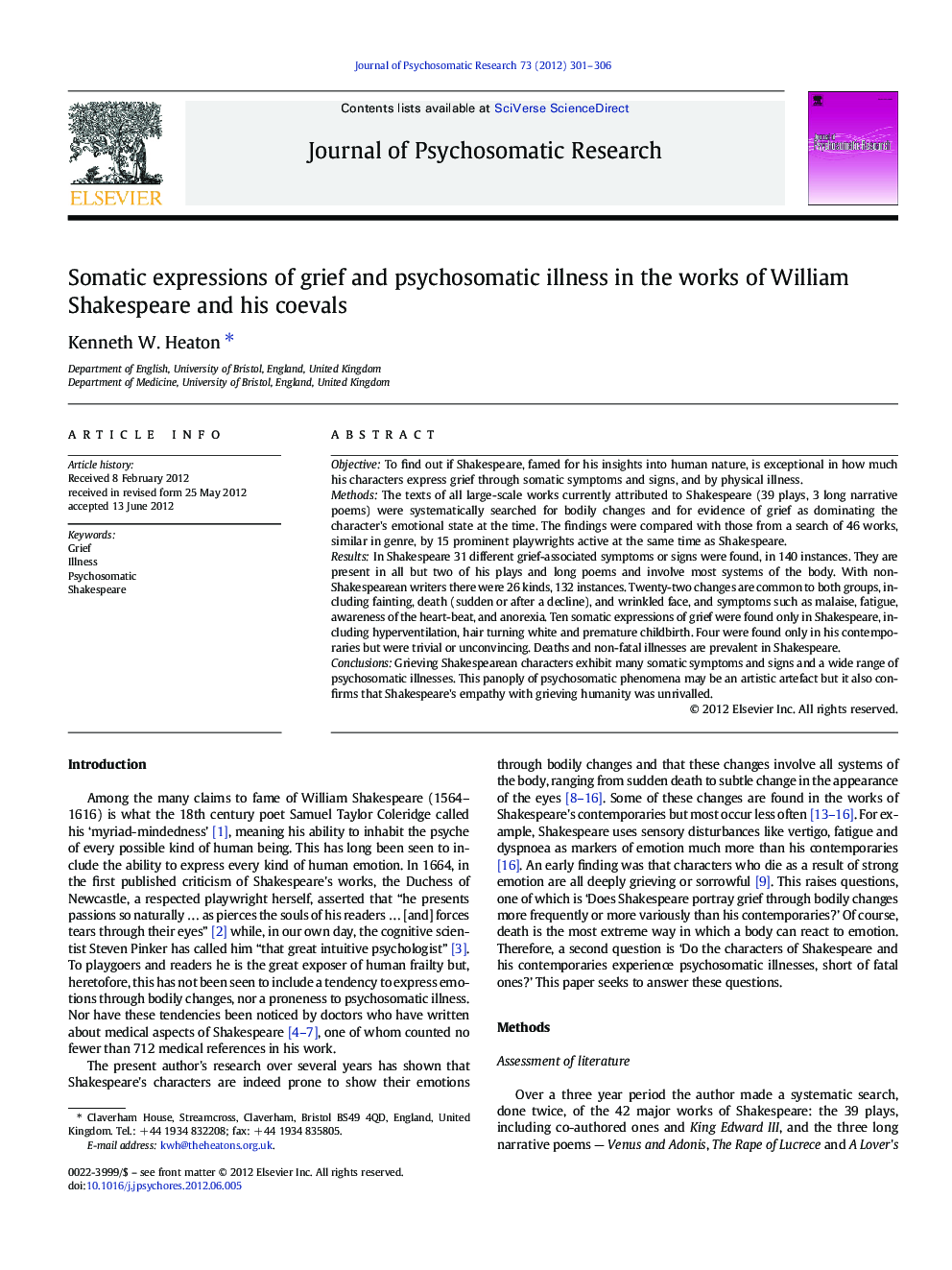| Article ID | Journal | Published Year | Pages | File Type |
|---|---|---|---|---|
| 949665 | Journal of Psychosomatic Research | 2012 | 6 Pages |
ObjectiveTo find out if Shakespeare, famed for his insights into human nature, is exceptional in how much his characters express grief through somatic symptoms and signs, and by physical illness.MethodsThe texts of all large-scale works currently attributed to Shakespeare (39 plays, 3 long narrative poems) were systematically searched for bodily changes and for evidence of grief as dominating the character's emotional state at the time. The findings were compared with those from a search of 46 works, similar in genre, by 15 prominent playwrights active at the same time as Shakespeare.ResultsIn Shakespeare 31 different grief-associated symptoms or signs were found, in 140 instances. They are present in all but two of his plays and long poems and involve most systems of the body. With non-Shakespearean writers there were 26 kinds, 132 instances. Twenty-two changes are common to both groups, including fainting, death (sudden or after a decline), and wrinkled face, and symptoms such as malaise, fatigue, awareness of the heart-beat, and anorexia. Ten somatic expressions of grief were found only in Shakespeare, including hyperventilation, hair turning white and premature childbirth. Four were found only in his contemporaries but were trivial or unconvincing. Deaths and non-fatal illnesses are prevalent in Shakespeare.ConclusionsGrieving Shakespearean characters exhibit many somatic symptoms and signs and a wide range of psychosomatic illnesses. This panoply of psychosomatic phenomena may be an artistic artefact but it also confirms that Shakespeare's empathy with grieving humanity was unrivalled.
